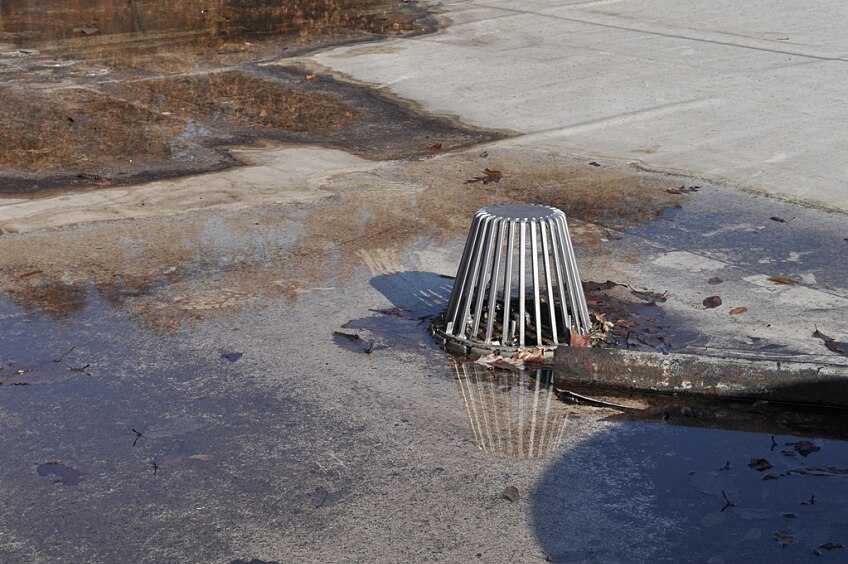A low-slope commercial roofing system is responsible for keeping the elements out of the building. During times of heavy rain, water with nowhere else to go may pond on the roof. A roof drain prevents water from ponding by providing a way for it to leave the roof.
Although commercial buildings may appear to have flat roofs, some roofs have slopes built into the structure and some are flat and need added slope, typically achieved with tapered insulation to facilitate the drainage of water. This slope is designed to guide the water to a drain so that it doesn't sit on the roof and cause damage to the roofing system or structure. Standing water can slowly deteriorate certain roofing materials and cause premature degradation, failure, or damage. It can also promote the growth of algae and plants, and attract nuisances such as birds and insects.
Guiding Water off the Roof
Residential roofs have gravity on their side—they remove water using gutters that collect the liquid and transport it down and away from the home. Commercial buildings with low-slope roofs have to work a little harder to remove water, and this is where roof drains come into play.
The design of the roofing system can help guide the water toward the drains. This often happens through the use of tapered insulation such as GAF EnergyGuard™ tapered polyiso insulation. The two most popular tapered boards deliver a 1/8-inch or 1/4-inch per foot slope. This slight slope prevents water from standing on the roof and forces it toward a roof drain that has been strategically installed at various low points on the roof with use of crickets and saddles.
Drain placement needs to be considered for when water is being shed by the parapet wall. To help the water arrive at the drainline or gutter, tapered crickets are typically installed in corners and between drains to direct the flow efficiently and alleviate ponding. This water will need to flow down the roof side of the parapet wall and follow the roof slope to reach the drain.
3 Common Types of Roof Drain Options
- Inner drains: These drains are connected to sloped pipes under the roof that carry the water off of the roof and away from the building. They typically rely on gravity and the slope of the roof to get the water to the drain.
- Scuppers: This drainage point is found at the edge of the roof, usually installed through a hole in the parapet wall. It is designed to drain water from the roof and into a downspout, or it may extend out from the building to shed the water.
- Siphonic drains: These drains feature a baffle that keeps air out and allows water to fill the pipes. Once the pipes are full, the lack of air creates a vacuum that siphons water from the roof at a high velocity. The baffle also serves to keep leaves and debris from gathering in the drain and causing a blockage.
Caring for and Maintaining Roof Drains
Inspecting and maintaining roof drains should be included with your regular roof inspections. Because roof drains are located at low points on the roof, it's easy for debris or leaves to build up at the drain. Debris needs to be cleared away in order for the drains to properly function. These clogs encourage pools of water to form on the rooftop, and the damage could cause structural issues for the building. Even just an inch of standing water can add thousands of pounds of weight to the roof.
Proper Installation Is Key
When properly installed, roof drains can keep the rooftop free of standing water for many years. To help contractors be successful while installing, the experts at GAF have developed the GAF CARE Contractor Training Center online. Courses are designed to allow you to learn at your own pace. So, whether you are new to installing roof drains or are looking for a refresher course, the CARE training is the perfect place to start.

